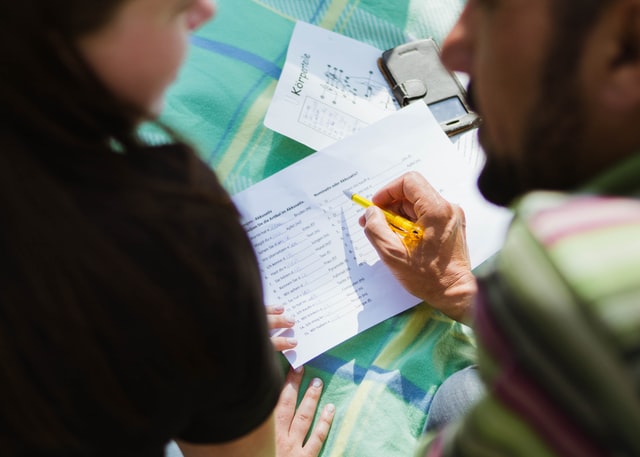Kinds of Work
In a F2F environment, it's relatively easy to distinguish between “what happens in class” and “what students do on their own.” That distinction becomes blurred to the degree that a remote course incorporates synchronous and asynchronous elements — listening to pre-recorded lectures at one's own pace, looking up sources, interacting with other students, completing online assignments — and perhaps only occasionally meeting with the instructor in real time.
A more apt distinction for remote courses would be “student-centered” vs. “instructor-centered” activities. To be sure, much of the “student-centered” work in a language course would be equally viable in both remote and F2F learning contexts:
- “Learn these vocabulary items for tomorrow: …”
- “Write 10 sentences using the following grammar structure: …”
- “Read this short story and post three questions …”
- “Watch the first 30 minutes of the film in Module 3”
- “Add a comment to the discussion thread concerning ...”
But other kinds of work in an L2 course call for a re-conceptualization of what is better suited to a “student-centered” vs. an “instructor-centered” context, and for careful instructions and guidance about how this work should be carried out remotely:
- What kinds of language-learning tasks will be more effective in a synchronous environment (e.g., practicing spontaneous conversation) vs. an asynchronous environment (e.g., using new grammar structures to write a story or anecdote)?
- Which synchronous elements could (or should) be moved from classroom time (e.g., pair work in a Breakout Room) to non-classroom time (e.g., pair work organized by two students on their own)?
- What role should external resources such video/audio files play — and how should students access them, use them, and respond to them?
- How might the class time make use of teaching tools such as a shared Google Doc or the Zoom Whiteboard in ways that a F2F classroom could not utilize?

For example, Fang Yan (CHI) suggests assigning one lengthy written assignment to be completed over the course of an entire week, rather than shorter daily assignments; this allows students to work at their own comfortable pace.
Mahiri Mwita (SWA) re-conceptualized Swahili 102 as a series of “pre-class tasks,” “in-class tasks” and “post-class assessment” tasks. The “pre-class” work consisted of readings and written assignments on grammar and culture – aspects of the course that would normally have been included to a greater degree in F2F class meetings; while the “in-class” tasks revolved much more around spoken interactions than was previously the case.
Quantity of Work
Instructors of remotely taught courses should ask themselves:
- Can I cover as much material in a remote course as I can in a F2F course?
- Can I assign the same amount of homework?
Perhaps; but instructors must be careful to consider the various elements — synchronous class time, asynchronous postings, extra student-to-student and student-to-instructor meetings — that they wish to incorporate into the course, and weigh the benefits of the time and energy that these components will require.
“Because many instructors will be tempted to hew rigidly to original course objectives and timelines, they may fall into the trap of the ‘course and a half’ syndrome, adding more and more components to their remotely taught course without cutting back on facetime.”
Ross & DiSalvo, p. 378
More specifically:
- How much work do students really have? You may not see them as often, but if they’re carrying a full load of courses, they may have more course-related commitments (Zoom meetings, offline assignments, tutorials) than in a F2F environment.
- If “instructor-centered” components (such as lectures) are pre-recorded, they may require more time for completion if students want to re-play them in part or in whole to assure comprehension.
- Group projects completed outside of a class meeting normally take more time in a remote vs. a F2F learning environment, since communication among remote group members routinely involves delays and disruptions.
“For example, students in a face-to-face class working in a group may be able to make their first group determinations in a few hours or to brainstorm their ideas in just an hour. Online, you will want to consider the asynchronous access and likely allow at least two days for the back and forth it may take for all to register their opinions.”
Ko & Rossen, p. 145
References & Resources
Ko, S. and Rossen, S. (2017). Teaching Online: A Practical Guide (4th ed.). New York and London: Routledge.
Ross, A. and DiSalvo, M. (2020). Negotiating displacement, regaining community: The Harvard Language Center’s response to the COVID-19 crisis. Foreign Language Annals, 53(2), 371-379.
